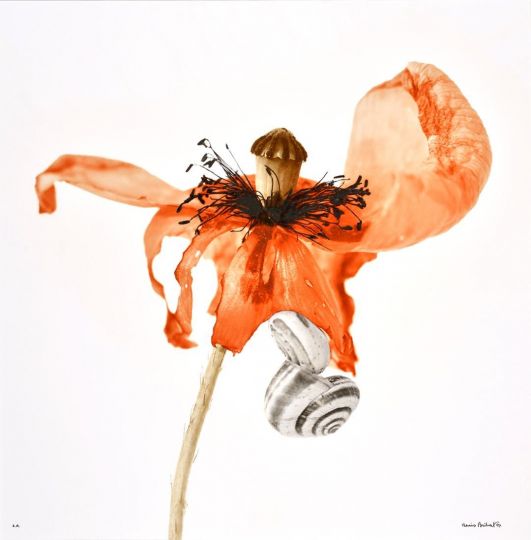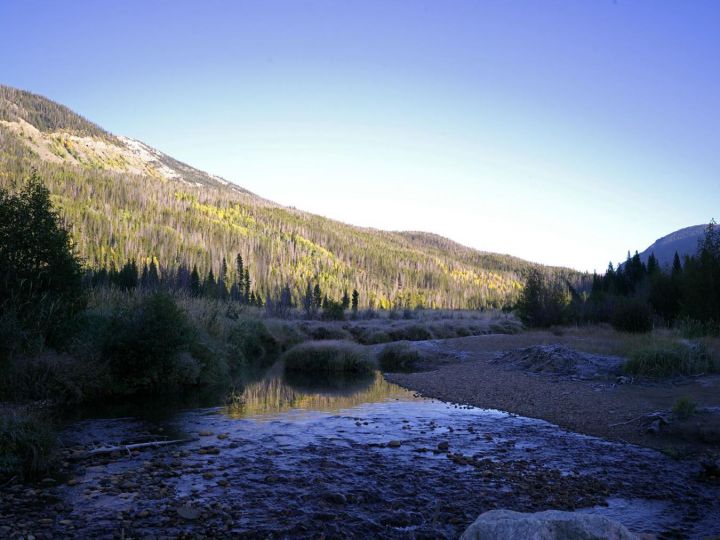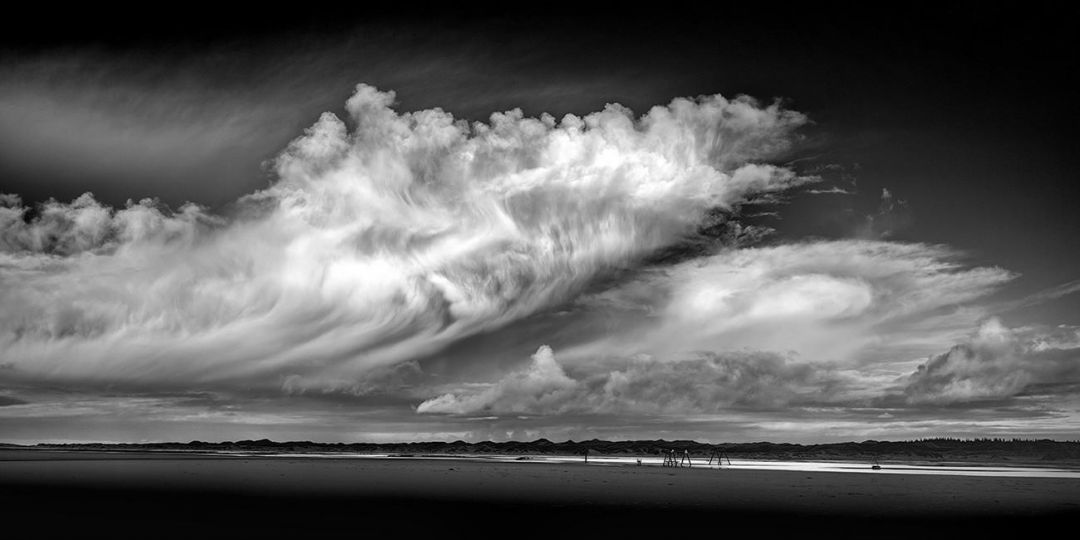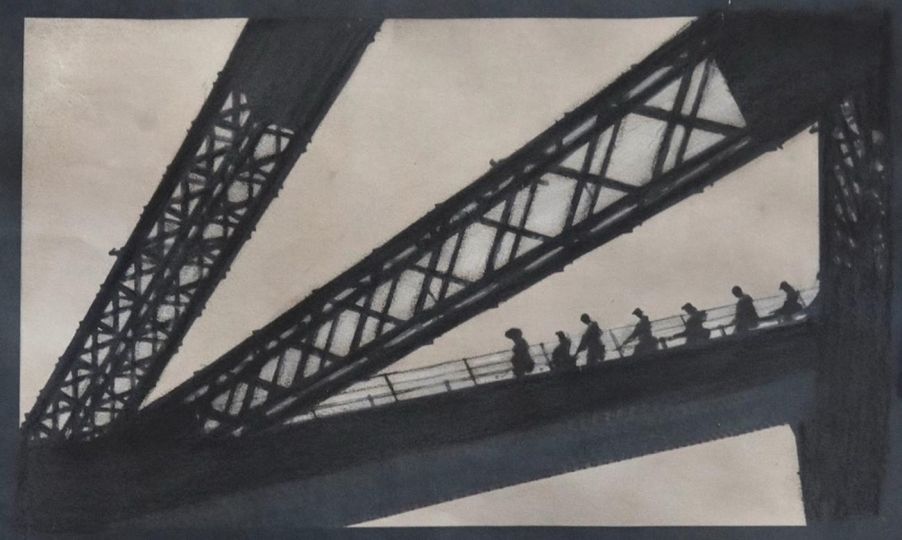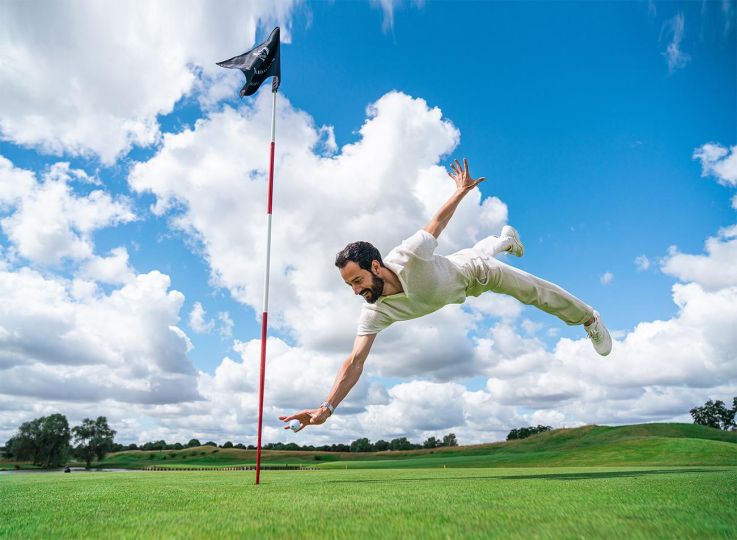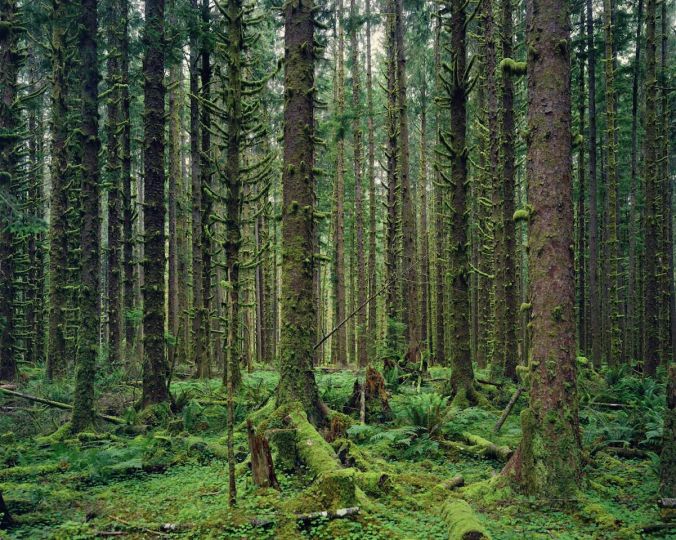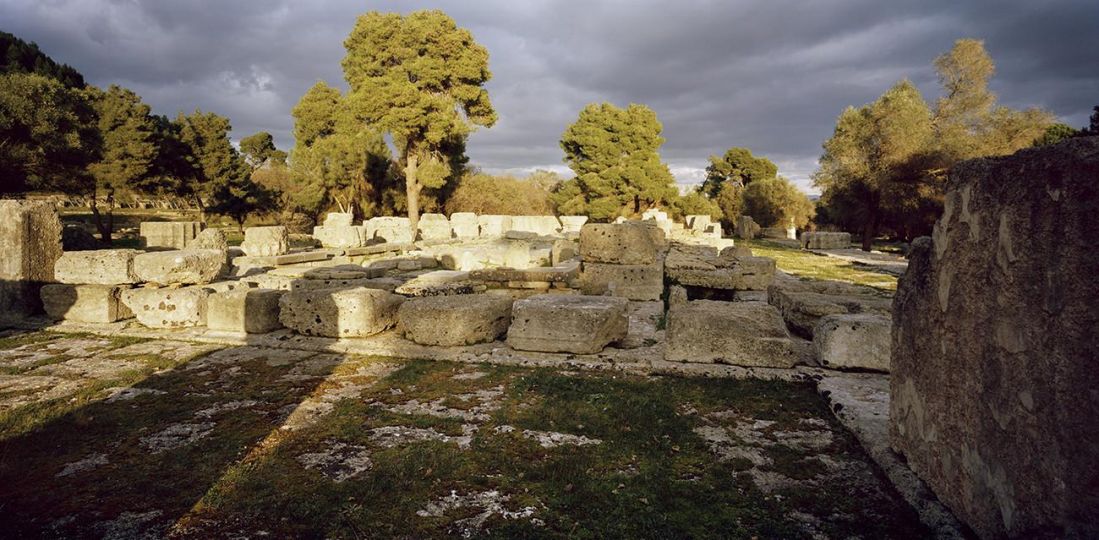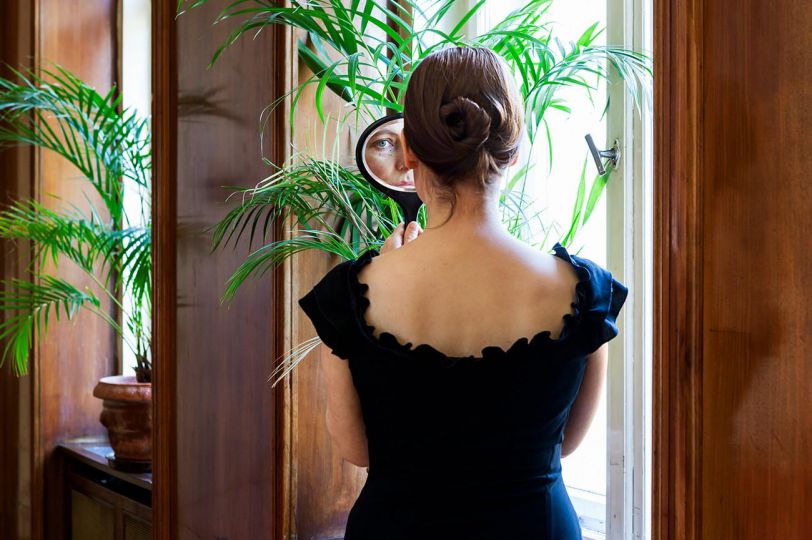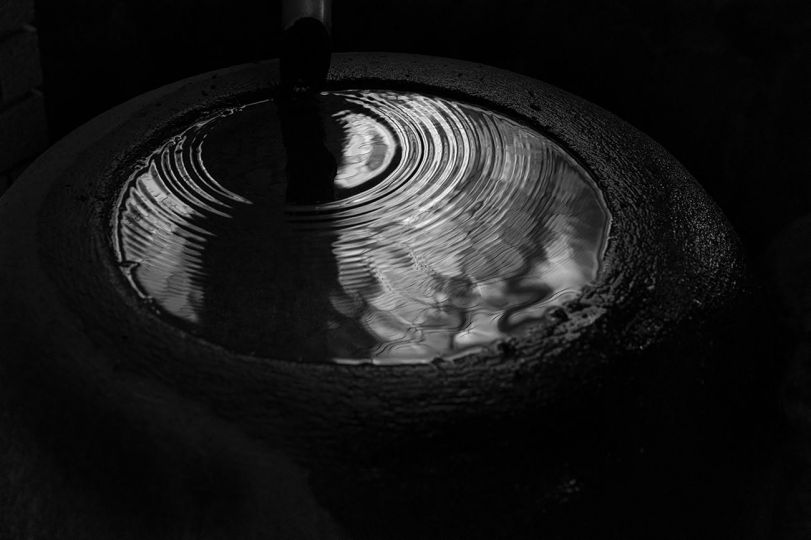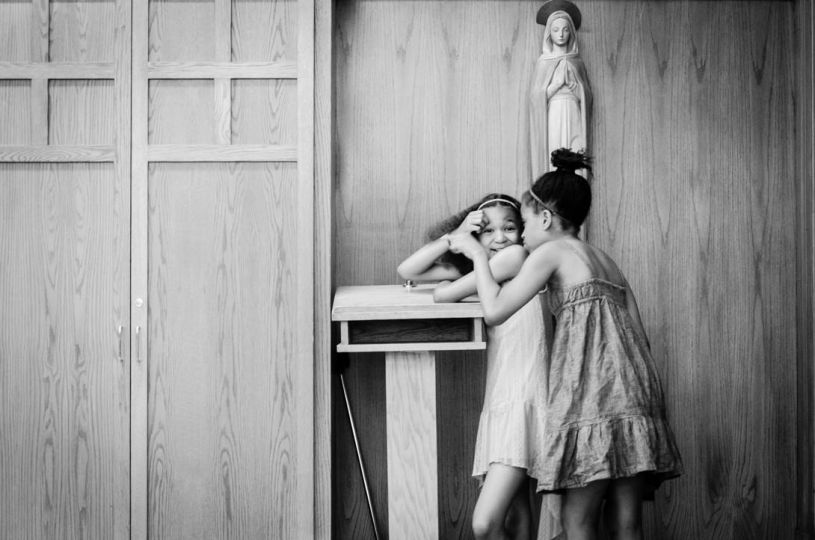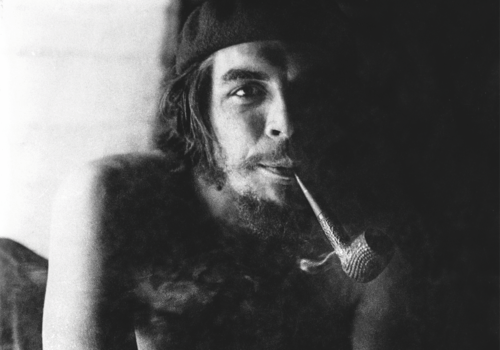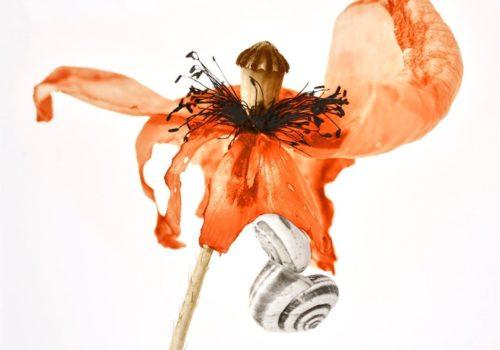Karen Stuke is a regular in the German photography scene and has created a beautiful series of works using her pinhole camera. But it is only when you meet her in person that her charm truly unfolds, and you get access to her photographic world, ideas, and stories. I was therefore so pleased to get her to sit down for this little recap about her current presentation “Hotel Bogota” at the project room of the Helmut Newton Foundation. Enjoy the read!
Nadine Dinter: You are working with a camera obscura, a rather old-fashioned–but at the same time elaborate and beautiful–way of taking photos. Why did you choose this way of photographing?
Karen Stuke: I have been photographing with the pinhole camera since 1994, when I studied photography at Bielefeld University of Applied Sciences under Prof. Dr. Gottfried Jäger. At the same time, I was an intern with the theatre photographer at the local theatre and had been wondering for a long time whether there was actually such a thing as the perfect theatre photo, as everyone wants to see something different: The director wants his idea realized, the set designer would like to see to the whole stage, the press officer wants the leading actor, and the actors would prefer to look good.
When there was a course on the camera obscura at university in 1993, I almost inevitably came up with the idea of combining everything by exposing the negative for exactly as long as the duration of the entire production. This way everything is represented in the picture. Whether you see it is another question. The camera obscura is not only the technically perfect solution for this series–the parallel to the peep-box stage is also important to me. I don’t use the pinhole camera for romantic reasons, but it is the result of thinking about how to deal with images and photography.
It is written that you want to take the “other,” absolute picture? What does this mean to you, personally and professionally?
KS: This phrase comes from a text by Gottfried Jäger about my theatre photos and applies exactly to what I have written above. Everything is present in the picture, conceptually considered and created. I accept the fact that I have no influence on the picture and leave it the space to create itself. I think that is pretty close to the way he thinks and works. I think very highly of him and his work and am proud that he has always encouraged and supported me in my work.
Your photographs deal with time, a flow of energy, movements, and space; often inspired by Greek mythology. Where do you seek inspiration?
KS: I think the most and best inspiration for me comes from observing the world and what is happening around me. History, society, the people around me. The news, even technology.
The food for thought is practically on the street. It’s all so diverse and exciting.
Very often the world seems like a theatre play to me. With me in the middle of it as a spectator–because theatre is also about reality. Isn’t that what most art does anyway?
How do you prepare for a photo shoot? What‘s your way of working, and do you have a particular routine?
KS: I don’t have to think much about my theatre or pinhole night shots. I check how long the play is going to last and decide on the appropriate film material. The same applies to the series “Sleeping Sister” or “Hotel Bogota,” where the exposure time corresponds to the duration of the night’s sleep. I know whether it’s winter or summer, so early or late sunrise. This is more or less the only information I know and can refer to.
My work on Sebald’s “Austerlitz” changed that. ”Austerlitz” was a commission from the Wapping Project in London, which came about because of the blurred aesthetic of my previous work. W.G. Sebald’s novel is about time and loss–a journey to uncover and recover lost memories. The protagonist Austerlitz is fictional, but his story is based on three true stories of Jewish children rescued on the Kindertransport from Nazi Germany to England in 1938-39.
The question of exposure time was important, of course, because up until then I had only used conceptual exposure times in my series. Following my own motto of “Just do it,” I started photographing in London. The first results were clearly too sharp for me and didn’t tell me anything. As I continued to read the book, I came to the part where Austerlitz suffers from depression, is admitted to a psychiatric hospital, can’t sleep, and starts wandering around London. His “London Walks” gave me the idea: I’ll do that too–I’ll walk and take photographs! That’s how I got the results I thought were appropriate and directly related to the book. I still find it exciting to see how my own work can be influenced from the outside. I even think this is important! Even if you’ve found your own style, it shouldn’t be set in stone, but should be reconsidered and revised according to the subject and the story, in order to evolve. So, you can actually say that sometimes there is a routine and sometimes trial and error.
At the moment, your works are exhibited at the project room of the Helmut Newton Foundation. We see works that you have taken in 2013 at the famous Hotel Bogota. Tell us a little bit about the project.
KS: Before I photographed at the Hotel Bogota, I had already been working for several years on the series “Sleeping Sister.” It’s a series about the unconscious and the proximity of death in which the exposure time corresponds to the duration of sleep. Joachim Rissmann, the hotelier of the Hotel Bogota, knew that work and invited me to stay at the Hotel Bogota in November 2012 to take photographs overnight there, too. I was more than happy to do so!
At that time the Hotel Bogota was very well know–not only in the Berlin photography scene. And not only because the fourth and fifth floors housed the studio of the then well-known fashion photographer Yva, where Helmut Newton did his apprenticeship from 1936 to 1938: It was also the venue for a wide range of photography exhibitions, swing and tango nights, readings, and concerts. A great place that was very lively!
As the location plays an important role in the pictures, I show the photos with the original rescue plans and sometimes with some of the carpets from the hotel rooms.
How long did the project last, and did you work alone or with a team?
KS: At first I slept in each room for two nights. However, when it was announced that the hotel would unfortunately have to close, I only slept in a room once a night.
In total I stayed in 44 rooms. I took the first photo in room 428 in November and the last on the night of 22-23 December, 2013. I set up the camera and open it when I go to bed and close it when I get up. So I work without a team, it’s just me and the camera.
It was a wonderful time, I would have loved to live there forever. It was a wonderful place, full of wonderful people. I was very sad and upset when I first heard that it had to close. On the other hand, it was a very exciting time, with auctions and exhibitions, and dinners together. Even packing up and putting things away was impressive.
It’s also exciting for the photographs, because without the closure and evacuation of the hotel, many of the pictures would never have been taken the way they are–with visible slatted frames, walls without pictures, me sleeping on the floor, etc. It was a lot of work to evacuate the hotel with its 116 rooms, kitchen, office, lounge, breakfast room, etc. I had and still have great respect for the Rissmann family, who put up with everything and gave me the opportunity to do this work.
Your fellow photographer Aino Kannisto also took her self-portrait-series during this time. Did you happen to meet her on site?
KS: If Aino and I were in the hotel at the same time, we didn’t get to know each other.
Maybe we even sat next to each other in the breakfast room without knowing it.
It is possible, the hotel was very big and there was a lot going on. There were always a lot of people around.
One day I found out that friends from London were also staying there while I was there, but we didn’t meet. One morning I was sitting next to René Burri and I recognized him.
Very often I don’t know what photographers look like, even if I know their names or their work.
Your other big passion seems to be Caruso… do you have a nice anecdote on how everything started?
KS:
- I was lucky enough to experience the “Bielefeld Opera Miracle” in the 1980s. A time when degenerate operas were rediscovered and brought to the stage by John Dew and Gottfried Pilz.
- I learned to play the violin as a child and played in the university orchestra as a student.
- Classical music has always been a part of my life.
- Since 2008, I have been running a project space in Berlin Wedding, the “Kronenboden,” a place where visual and performing arts intersect with a strong connection to theatre.
- In 2010, I spent a few weeks in Naples to create and exhibit my camera obscura photographs at the theatre festival there. During that time I visited Caruso’s tomb for the first time.
- When I gave a party with a gramophone at the Kronenboden on New Year’s Eve 2015/16 and saw the reactions of the singers and musicians there, it was clear to me: I have to have a gramophone. And I always want to remember the first shellac record I bought for it. I knew it had to be a Caruso record, because he was one of the first singers to record. I didn’t realize at the time that this would be the cornerstone of the “Caruso Kronenboden Collection” and the beginning of the artistic research project “Caruso Sings Again.” It just developed.
With this project I do not want to say that Caruso was the best tenor of all time, but why is he still proverbial today? And: Where does he take me? Therefore the collection includes not only records and memorabilia from before 1921, when he died, but also stamps and books that are still being produced and written today, sheet music, films in which he appeared, film clips about him, the smell of the soap he used, the dishes named after him “Caruso Eats Again,” other singers named after him, old press photos, glass negatives, and new photographs.
I travel with the camera obscura to the places where he was born and where he is buried, where he sang or where he lived. I’m not a documentary photographer–and how can you document something that happened over 100 years ago anyway? That’s where the pinhole camera comes in again–the blurriness of the images leaves space and perhaps gives an idea of what happened during his lifetime.
For example, I wondered for a long time what was the last thing he saw before he died.
Antonio Maiorino, gallery owner and director of PrimaPianoNapoli, who had already given me the opportunity to take photographs at the Theatre Festival in Naples, and who also exhibited the Hotel Bogota series in his space in Naples, helped me to stay in the suite of the Hotel Vesuvio, where Enrico Caruso died in 1921. I set up my pinhole camera there, as I had done in the Hotel Bogota and many other places, and photographed myself sleeping with a long exposure.
The bed I slept in was most likely not the bed in which Caruso died in 1921. But one day I read an interview with Luciano Pavarotti in which he described sleeping in the room where Caruso died–I think I slept in the bed where Pavarotti slept 🙂
The anniversaries of his death and birthdays are particularly important and I always do something. I use everything that society offers me. Just to name a few:
- A star is now named after him
- A tree has been planted in his name
- On his last birthday he got the title of “Lord”
- A monkey was symbolically adopted in his name at the New York Zoo (this refers to the first “Me Too” scandal, where he was said to have grabbed a lady’s bottom and said: “It was the monkey”)
- For another birthday, I symbolically sponsored a digital turtle, named it Enrico Caruso and it will now swim through the digital ocean for a good cause. “Caruso Swims Again.”
- I am also doing flash mobs or concerts with the gramophone, playing his music in various places. It’s just wonderful to see people’s reactions.
It’s obvious that I like analogue–like the gramophone, the pinhole camera has no electricity, is easy to repair, and even easy to make. So everything is very easy to keep track of.
“Caruso” is such a versatile subject, let’s see where it takes me.
The “Caruso” project combines a lot of things that interest me. Friends of mine have already said that it was actually a logical consequence that it ended up with me.
What‘s your next project?
KS: Since everyone is talking about AI and I’m using the Caruso project for everything that the world has to offer, I’m going to create an image of the old Caruso (which he never became) in an opera house where he never sang. I will also have him sing a new aria that he has never heard before. We’ll see, but the idea is stuck in my head.
After that, I’m done with AI for now, and I’m going back to the lab to work on more photograms, to be made with shellac and gramophone. Partly black and white, partly color. I like photography and the material as an object, which outweighs all the talk about artificial intelligence. And it has as many surprises in store for me, if not more.
It’s also an ongoing project to sort through the image archive and scan mountains of negatives. I also want to continue working on “The Men Who Fell from the Sky.”
But that’s too much to go into here.
Your advice for the young generation of theatre photographers?
KS: I was always surprised that many theatre photographers came to the theatre because they were press photographers and discovered the theatre by chance. For me it was the other way round–I knew about theatre and I knew about photography, and I was able to combine the two. So I already had a feeling for the situations and moods in the theatre. I used to come to jobs dressed in black and in socks, so I wouldn’t be seen or heard. This is now a little easier with the quiet cameras. You should see the pictures and not the photographer.
For more information, check out the artist’s IG account @karen_stuke
Current exhibition:
“Hotel Bogota” – Aino Kannisto + Karen Stuke
Through 16 February 2025, at the Project Room of the Helmut Newton Foundation, Berlin



